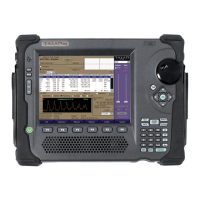MANUAL TEST FUNCTIONS
54
NLJD Line Non-Linear Junction Detection
The Non-Linear Junction Detector function is one of the most powerful tests in the TALAN. It is
very reliable for determining if there are additional electronics attached to a line. Additionally,
you can easily identify which conductors have the additional electronics, and you can identify
the connection as a series or parallel connection.
Furthermore, when testing a line for an NLJD response, you must consider that a strong 3
rd
harmonic response is typically not the result of a corrosive line, rather it may be the result of
limiting diodes in a phone tap.
It is highly recommended that you only use the NLJD function on a dry line meaning the phone
should be disconnected and the line should be disconnected from the switch. Ideally, there
should be no electronics on the line. However, in the first example below, the line was still
connected to the switch, and it appears that there are electronics on many pairs, but if you look
closely, it is clear that the transmit power is turned off and therefore, the response that you are
seeing is merely the digital signals on the line that are in the frequency range of the NLJD
detection circuit. In other words, the indicated responses in the figure below are not threat
NLJD signals. You should always be careful when using the NLJD function to make sure that the
signals that you are detecting are not part of the phone system.

